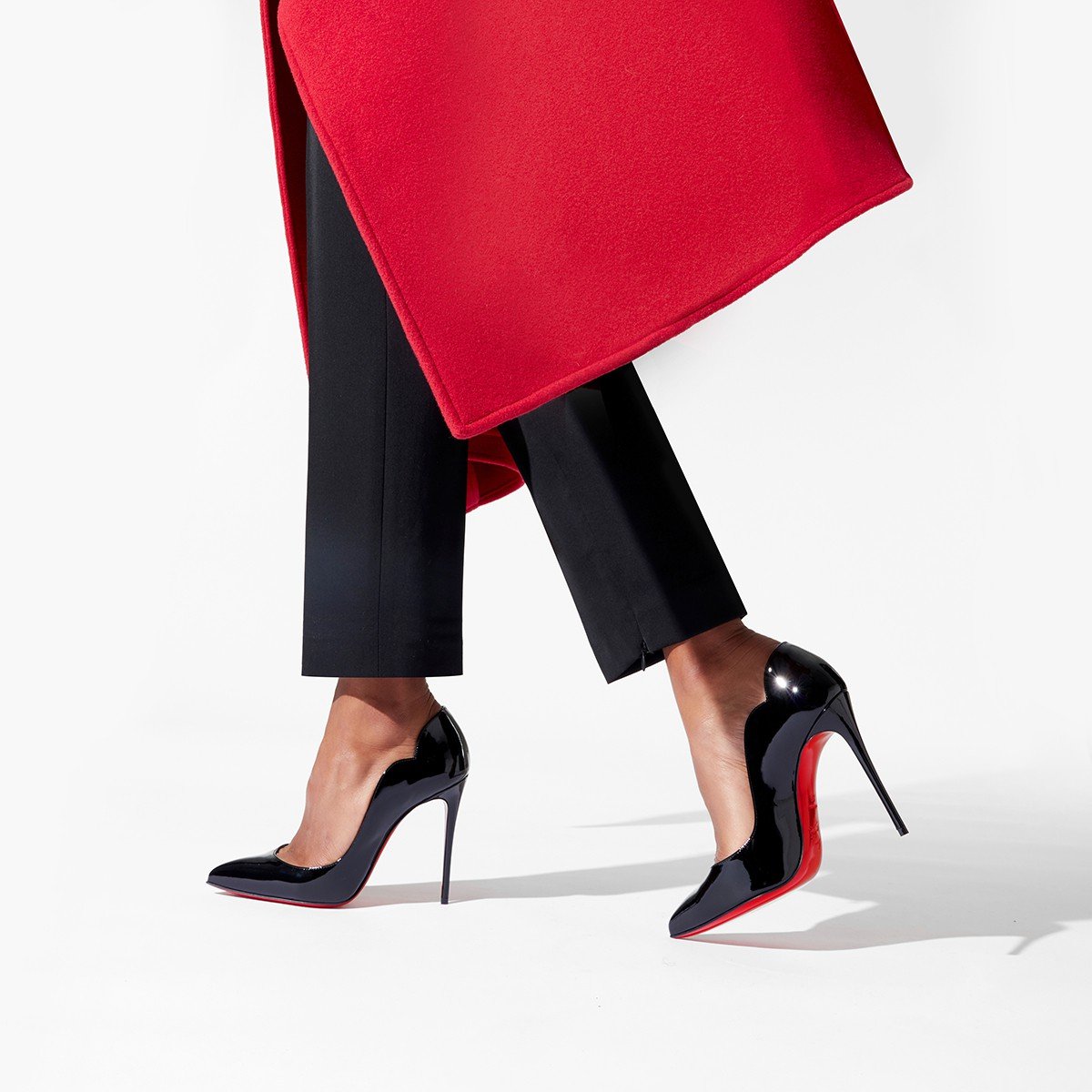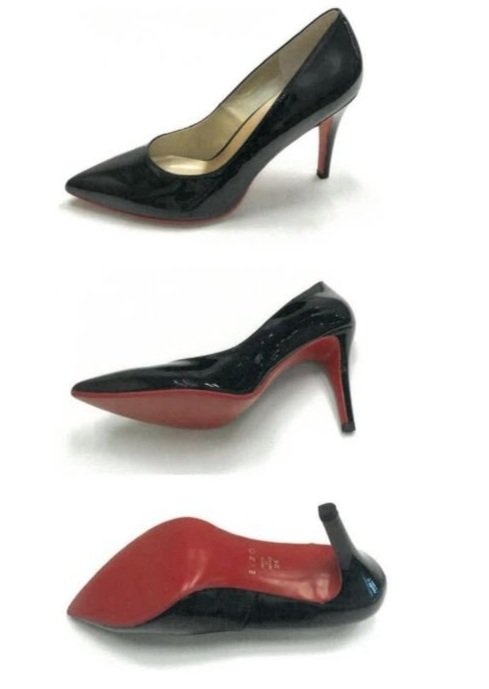Louboutin Loses Red Sole Litigation in Japan
In a judgement that was handed down last month, The Tokyo District Court has decided that the red sole of "Louboutin" is a "general design".
In a judgement that was handed down last month, The Tokyo District Court has decided that the red sole of "Louboutin" is a "general design".
Christian Louboutin filed a complaint against the Eizo collection, a Japanese footwear manufacturer founded in 1959 that started to sell a red coloured rubber sole on a women’s shoes from May 2018 - alleging that the manufacture, exhibition and sale of seven types of shoes with a red (rubber) soles by Eizo Collection caused confusion with "Louboutin" products and infringed its intellectual property right under Japan’s Unfair Competition Prevention Law, demanding 42 million yen in compensation for damages.
Eizo Collection Red rubber sole heels
Conversely, Eizo Collection argued, that the red sole of Louboutin’s heels "has no novelty or specificity, and is not “well recognised.” That Louboutin’s “red colour is also one of the red colours sold by Pantone as a colour sample, and is commonly distributed in the market…it is not a special colour created by the plaintiffs, nor is it a colour that can be used exclusively by the plaintiffs… In fashion products (especially for women), it is a colour that is generally used... In fact, in Japan…it is customary for many businesses to use red on the soles of their shoes, from the soles of traditional lacquered clogs to the soles of women's high heels.”
Context - Louboutin trademark application is still pending in Japan
Prior to Japan's signing of the Trans-Pacific Partnership Agreement in 2016, to accommodate for the obligations of the agreement, the Japanese Trademark Law was revised in 2015 to provide additional trademark protection. As a result of the legislation reform, applications for colour trademarks (together with sound trademarks) began to be accepted on April 1, 2015. However, although trademarks of colour are registered in Japan, all of the registrations were made with a combination of two or more colours, and none of them has been registered as a single colour. Louboutin's red sole trademark application was also rejected and currently awaiting an appeal trial.
In the current case, Louboutin is not seeking to dispute whether or not the colour red can be registered as a trademark, but rather whether or not businesses other than Louboutin can use red on the sole high heel’s shoes.
Judgement
In the 39-page judgement (that can be found here) the court sided with Eizo and ruled against Louboutin.
In this case, the courts homed in on the difference in characteristics of the two brands’ shoe products. The courts noted the different overall impressions of the products, pointing out that: “the sole of the plaintiff's product is made of leather and has a red lacquer coating on it, so the colour of the sole is a glossy red like nail polish. whereas the sole of the defendant's product is made of rubber, and since it is not specially painted, the colour of the sole is dull red.” Whereas it is recognised that the Eizo sole is red, it does not ‘use’ colour, said the courts, because the defendant’s high heel shoe “sole is made of rubber and is not specially painted.”
Because of this, the courts did not recognise it as being ‘similar’ or even ‘well-known among consumers or purchasers’ as required under Article 2, paragraph 1, sub-section 1 of Japan’s Non-Competition Law because in terms of lustre and texture the characteristics of the goods specified are different, and were not deemed to correspond to Louboutin’s product label.
The use of the colour red is common for shoes in fashion
Interestingly the Japanese courts did not stop there, they went further to say that: "the red colour used for the product of shoes is one of the typical colours traditionally adopted from the viewpoint of the aesthetics of the product, and the sole of the shoe…and a red colour similar to the plaintiff's red colour is in fashion-related fields, a colour that has been used for a long time both in Japan and overseas. In fact, according to the above-mentioned fact, [said the courts] even in high heels for women, it has been continuously used as the colour of soles even before the plaintiff's product was sold in Japan. It can be said that it is a general design now, (see page 27-28).
No confusion at the point of purchase
Elaborating on its finding of no confusion, the courts noted that while consumer of high heels are the source of both products given that: “the plaintiff's product is a high heel in the high price range of at least 80,000 yen, and lacquer red sole and that the accused product is a high heel with a red rubber sole in an affordable price range,” on this basis “it is reasonable to admit that the difference between the two products is sufficiently discernible on its own” judged the court. Moreover, the courts went further to highlight that “consumers who want to buy shoes such as the so-called luxury brand stiletto products, in light of their price range, it is normal to confirm the source of the product not by the form of the product itself but also by the trademark etc., because both the plaintiff's product and the defendant's product have the brand name logo on the insole and shoe sole. Consumers can fully confirm the difference in source by the logo. Moreover, consumers who want to purchase luxury brand products such as the plaintiff's products carefully select and purchase products….”
In addition, and from a commercial standpoint, it was viewed that “the sales period of the plaintiff's products in Japan is only about 20 years, and it cannot be said that they have been sold for such a long period of time, nor that the carried out to meet the requirements for publicity, to satisfy the source labelling requirements as referred to in Article 2, Paragraph 1, Item 1 of the Non-Competition Law. In other words, Masaki Mikami IP attorney of Marks IP law firm, that the commercial use made of the brand’s mark in the region is “insufficient to find Louboutin’s red soles have played a role in the source indicator in Japan.”
Comment
Colours that are readily recognised can serve as a powerful source indicator to differentiate goods and services. While it was once thought that a trademark could only protect symbols and logos currently brands are becoming more aware of the enhanced possibilities of trademark law to protect other distinct brand features. While this is so, with respect to the recognition of Louboutins rights for the use of the colour red the brand’s trademark has been recognised in 50 countries, including major countries such as Australia, Canada, France, the European Union, India, Russia, Singapore, the United Kingdom, and the United States. But what remains particularly interesting in this case and the one pending before the appeal court in Japan is the difference in treatment that the colour red can give rise to across different countries. Most recently it is the trademark law of Japan that the "red sole" was prevented from being protected.
This unfair competition case has increased significance for the brand while they wait to hear the appeal verdict of the refusal of their red sole trademark before the courts, will they find success? For now, it seems clear that you cannot put the same shoe on every foot!


